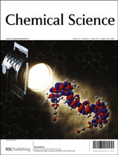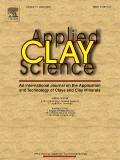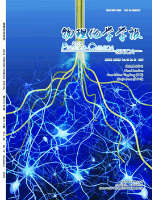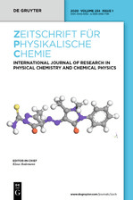
Theoretical and Experimental Chemistry
Scope & Guideline
Exploring the Frontiers of Chemical Knowledge
Introduction
Aims and Scopes
- Catalytic Processes and Mechanisms:
Research in this area emphasizes the development and analysis of catalysts for various chemical reactions, including hydrodehalogenation, transesterification, and methanation, highlighting the mechanistic understanding of catalytic activity. - Photocatalysis and Photochemical Applications:
This focus includes studies on photocatalytic materials and their applications in hydrogen production, environmental remediation, and the conversion of biomass, utilizing visible light to drive chemical transformations. - Nanomaterials and Nanocomposites:
Investigations into the synthesis, characterization, and application of nanosized materials, including metal oxides and carbon-based nanocomposites, are central to the journal, addressing their catalytic and photocatalytic properties. - Environmental Chemistry and Remediation:
The journal covers research on the removal of pollutants from water and air through various chemical processes, including the use of layered double hydroxides and photocatalysts for environmental cleanup. - Theoretical Modeling and Computational Chemistry:
Papers often involve computational studies that predict the behavior of chemical systems, supporting experimental findings with theoretical insights into reaction mechanisms and material properties.
Trending and Emerging
- Sustainable and Green Chemistry:
There is a notable increase in research focusing on sustainable practices within chemistry, including the development of catalysts that minimize environmental impact and the utilization of renewable resources for chemical transformations. - Advanced Nanostructured Catalysts:
The exploration of nanostructured materials for catalytic applications is rapidly growing, particularly in the context of enhancing efficiency in reactions such as hydrogen production and pollutant degradation. - Interdisciplinary Applications of Chemistry:
Research that integrates chemistry with fields like materials science, environmental science, and energy conversion is on the rise, highlighting the need for collaborative approaches to tackle complex scientific challenges. - Mechanochemical and Sonochemical Methods:
Emerging methodologies such as mechanochemistry and sonochemistry are being increasingly explored for their potential in synthesizing materials and facilitating chemical reactions under mild conditions. - Photocatalytic Systems for Energy Conversion:
There is a marked trend towards developing photocatalytic systems aimed at converting solar energy into chemical energy, particularly in the context of hydrogen production from water and organic substrates.
Declining or Waning
- Traditional Organic Synthesis Methods:
Research focusing solely on classical organic synthesis techniques is less frequently addressed, with a shift towards more innovative and sustainable approaches, such as photocatalysis and green chemistry methodologies. - Inorganic Coordination Chemistry:
Although still relevant, the frequency of studies dedicated purely to coordination compounds and their properties has lessened, as the journal's focus has shifted towards more interdisciplinary applications involving materials science. - Electrochemical Sensors:
While electrochemical sensors remain important, there appears to be a decline in the volume of publications dedicated specifically to their development, as more emphasis is placed on broader applications of nanomaterials in catalysis and photocatalytic processes.
Similar Journals

REVIEWS IN INORGANIC CHEMISTRY
Pioneering Knowledge in Inorganic ChemistryREVIEWS IN INORGANIC CHEMISTRY, published by Walter de Gruyter GmbH, is a distinguished academic journal that serves as a vital resource for researchers, professionals, and students within the field of inorganic chemistry. With its ISSN 0193-4929 and E-ISSN 2191-0227, this journal has made a significant impact on the discipline, holding a commendable Q2 ranking in the 2023 category of Inorganic Chemistry, placing it in the 81st percentile among its peers according to Scopus rankings. Continuously published since its inception, with converged years spanning from 1985 to 1990 and 1992 to 2024, it features comprehensive reviews encompassing the latest advancements, methodologies, and theoretical frameworks in the subject. Researchers will find IDEAL insights and valuable discussions that keep them abreast of trends and challenges in the domain, essential for driving innovation and collaboration. The journal’s commitment to quality and rigorous peer review highlights its importance in advancing inorganic chemistry research, making it an indispensable tool for academic excellence.

TRANSACTIONS OF TIANJIN UNIVERSITY
Advancing multidisciplinary research for a global audience.TRANSACTIONS OF TIANJIN UNIVERSITY, published by SpringerNature, is a premier journal in the field of multidisciplinary research, boasting an impressive Q1 ranking and placing within the top 93rd percentile of its category according to Scopus. With an ISSN of 1006-4982 and E-ISSN of 1995-8196, this journal facilitates insightful and innovative contributions that span various disciplines, making it a vital resource for academics and professionals alike. Established in 2004, the journal continues to thrive with a commitment to advancing knowledge and fostering collaboration in scientific inquiry. TRANSACTIONS OF TIANJIN UNIVERSITY aligns with global research trends and offers a platform for the dissemination of high-quality research findings, promoting interdisciplinary approaches to solving complex problems. Located in China, its influence extends well beyond national borders, appealing to a diverse readership eager to explore the latest advancements and discussions in the multidisciplinary arena.

JOURNAL OF CHEMICAL SCIENCES
Connecting Ideas, Inspiring Discoveries in ChemistryThe JOURNAL OF CHEMICAL SCIENCES, published by the Indian Academy of Sciences, is a premier academic journal that serves the global community of chemists and researchers. With an ISSN of 0974-3626 and an E-ISSN of 0973-7103, this journal is pivotal in disseminating high-quality research across diverse areas of chemical sciences. As of 2023, it holds a respectable Q3 ranking in the field of Chemistry (miscellaneous) and ranks #215 out of 408 in General Chemistry according to Scopus, reflecting its commitment to advancing the discipline. Operating in an open-access format, the journal ensures that research findings are readily accessible to a broader audience, fostering collaboration and innovation. Established in 1980 and continuing to evolve, the journal's scope encompasses fundamental and applied chemistry, and aims to bridge gaps between theoretical and practical applications. With a mission to support the scientific community, the JOURNAL OF CHEMICAL SCIENCES is an essential resource for researchers, professionals, and students alike, providing a platform for the exchange of groundbreaking ideas and discoveries.

Chemical Science
Elevating Chemical Research to New HeightsChemical Science, published by the esteemed Royal Society of Chemistry, is a leading open-access journal that has been a pivotal platform for disseminating high-quality research in the field of chemistry since its inception in 2010. With an impressive Impact Factor and ranked in the Q1 category of Chemistry (miscellaneous) and holding a distinguished rank of #34 out of 408 in General Chemistry according to Scopus, it is widely recognized for its rigorous peer-review process and innovative contributions to the discipline. The journal embraces a global readership by providing an open-access model since 2015, thereby making vital scientific advancements accessible to researchers, professionals, and students alike. Covering various branches of chemistry, Chemical Science aims to publish original research articles, reviews, and communications that advance our understanding and application of chemical sciences. With its commitment to excellence and its continued relevance in a rapidly evolving field, Chemical Science is an indispensable resource for anyone engaged in chemistry research and education.

APPLIED CLAY SCIENCE
Connecting Scientists Through Groundbreaking Clay ResearchAPPLIED CLAY SCIENCE, published by Elsevier, is a leading international journal dedicated to the dissemination of high-quality research in the fields of geochemistry, geology, soil science, and water science and technology. With its ISSN 0169-1317 and E-ISSN 1872-9053, this peer-reviewed journal has been an essential resource for researchers since its inception in 1985 and is set to continue its impactful journey through 2024. Recognized for its significant contributions, it proudly holds a Q1 ranking in multiple categories according to the latest assessments, including Geochemistry and Petrology, and Geology, ranking 5th and 10th respectively in Scopus. This journal serves as a vital platform for the advancement of knowledge surrounding clay science, exploring both fundamental and applied research that addresses contemporary challenges in environmental and geological sciences. Whether accessed via institutional subscriptions or individual purchase, APPLIED CLAY SCIENCE is dedicated to fostering an open dialogue among scientists, professionals, and educators in the discipline.

ACTA PHYSICO-CHIMICA SINICA
Exploring molecular dynamics and beyond with precision.ACTA PHYSICO-CHIMICA SINICA, published by PEKING UNIV PRESS, is a prestigious journal focused on the fields of Physical and Theoretical Chemistry, boasting an impressive impact factor as reflected in its 2023 Q1 ranking in this domain, placing it among the top 5% of journals in the subject area. With its origins dating back to 1996, the journal serves as a vital platform for the dissemination of cutting-edge research, encompassing a broad range of topics from molecular dynamics to thermodynamics and quantum chemistry. Researchers, professionals, and students are provided with valuable insights through peer-reviewed articles, making it an indispensable resource for advancing knowledge and sparking innovation in the discipline. While this journal does not offer Open Access options, its rigorous editorial standards and influential contributions continue to shape the landscape of Physical and Theoretical Chemistry globally. For submissions or further information, please refer to the editorial office at Peking University, Chemistry Building, Beijing, China.

ZEITSCHRIFT FUR PHYSIKALISCHE CHEMIE-INTERNATIONAL JOURNAL OF RESEARCH IN PHYSICAL CHEMISTRY & CHEMICAL PHYSICS
Advancing the Frontiers of Chemical ScienceZEITSCHRIFT FUR PHYSIKALISCHE CHEMIE-INTERNATIONAL JOURNAL OF RESEARCH IN PHYSICAL CHEMISTRY & CHEMICAL PHYSICS, published by WALTER DE GRUYTER GMBH, is a highly regarded platform for researchers in the field of physical chemistry and chemical physics. With an ISSN of 0942-9352 and an E-ISSN of 2196-7156, this journal serves as a vital resource for the dissemination of original research, critical reviews, and insightful discussions that span theoretical and experimental investigations. Recognized for its quality, it holds a Q2 classification within the 2023 quartiles of Physical and Theoretical Chemistry and ranks 72nd out of 189 in the Scopus database, placing it in the 62nd percentile. The journal’s extensive publication history, originating from 1943, showcases its long-standing commitment to advancing the understanding of complex chemical phenomena. Although it currently does not offer open-access options, it continues to attract contributions from leading experts worldwide, making it essential reading for professionals, researchers, and students dedicated to pushing the frontiers of chemical science. The journal is located in Berlin, Germany, at Genthiner Strasse 13, D-10785 Berlin, Germany.

Catalysts
Unleashing Potential: Your Gateway to Catalysis KnowledgeCatalysts is a leading academic journal in the field of catalysis, published by MDPI since 2011 and well-regarded for its commitment to open access publishing. Based in Switzerland, this journal delivers innovative research and reviews that span various aspects of catalysis, from heterogeneous and homogeneous catalysis to the development of novel catalytic systems. With a commendable impact factor and a notable Q2 ranking in both Catalysis and Physical and Theoretical Chemistry categories, Catalysts plays a critical role in advancing the scientific discourse in these fields. The open-access model ensures that all research articles are readily accessible to researchers and professionals worldwide, fostering collaboration and accessibility to high-quality scientific literature. As the journal continues to publish cutting-edge studies up to its convergence in 2024, it remains an essential resource for anyone involved in catalysis research, from seasoned professionals to emerging scholars.

Eurasian Journal of Chemistry
Fostering Collaboration Through Open AccessEurasian Journal of Chemistry is an emerging open-access journal published by KARAGANDA STATE UNIVERSITY in Kazakhstan. With a focus on the diverse and dynamic field of chemistry, this journal aims to disseminate cutting-edge research and innovative findings from various branches of chemistry, engaging a global audience of researchers, professionals, and students. Despite its recent inception in 2023, the journal is strategically positioned within the field, currently ranked in the fourth quartile of Scopus for General Chemistry, indicating its potential for growth and contribution to the scientific community. The ISSN of the journal is 2959-0663 with an electronic counterpart of 2959-0671, ensuring wide accessibility to its rich content. With an open-access model, the Eurasian Journal of Chemistry promotes the sharing of knowledge and advances in research to foster collaboration and inspiration across the globe.

RESEARCH ON CHEMICAL INTERMEDIATES
Advancing Knowledge in Chemical IntermediatesRESEARCH ON CHEMICAL INTERMEDIATES, published by Springer, is a prestigious academic journal that has been contributing to the field of chemistry since 1984. With an ISSN of 0922-6168 and an E-ISSN of 1568-5675, this journal serves as a vital platform for the dissemination of innovative findings and research advancements related to chemical intermediates. Situated in the Netherlands, it has established a commendable reputation, currently ranked in the Q2 category for miscellaneous chemistry and positioned at #131/408 with a 68th percentile in the Scopus rankings. Though it does not operate under an open-access model, the journal plays a crucial role in connecting scientists, researchers, and practitioners to facilitate a better understanding of synthetic methods, characterizations, and applications of various chemical intermediates. Continually publishing high-quality research until its anticipated convergence in 2024, this journal is an essential resource for those looking to expand their knowledge and contribute to the vibrant community of chemical science.